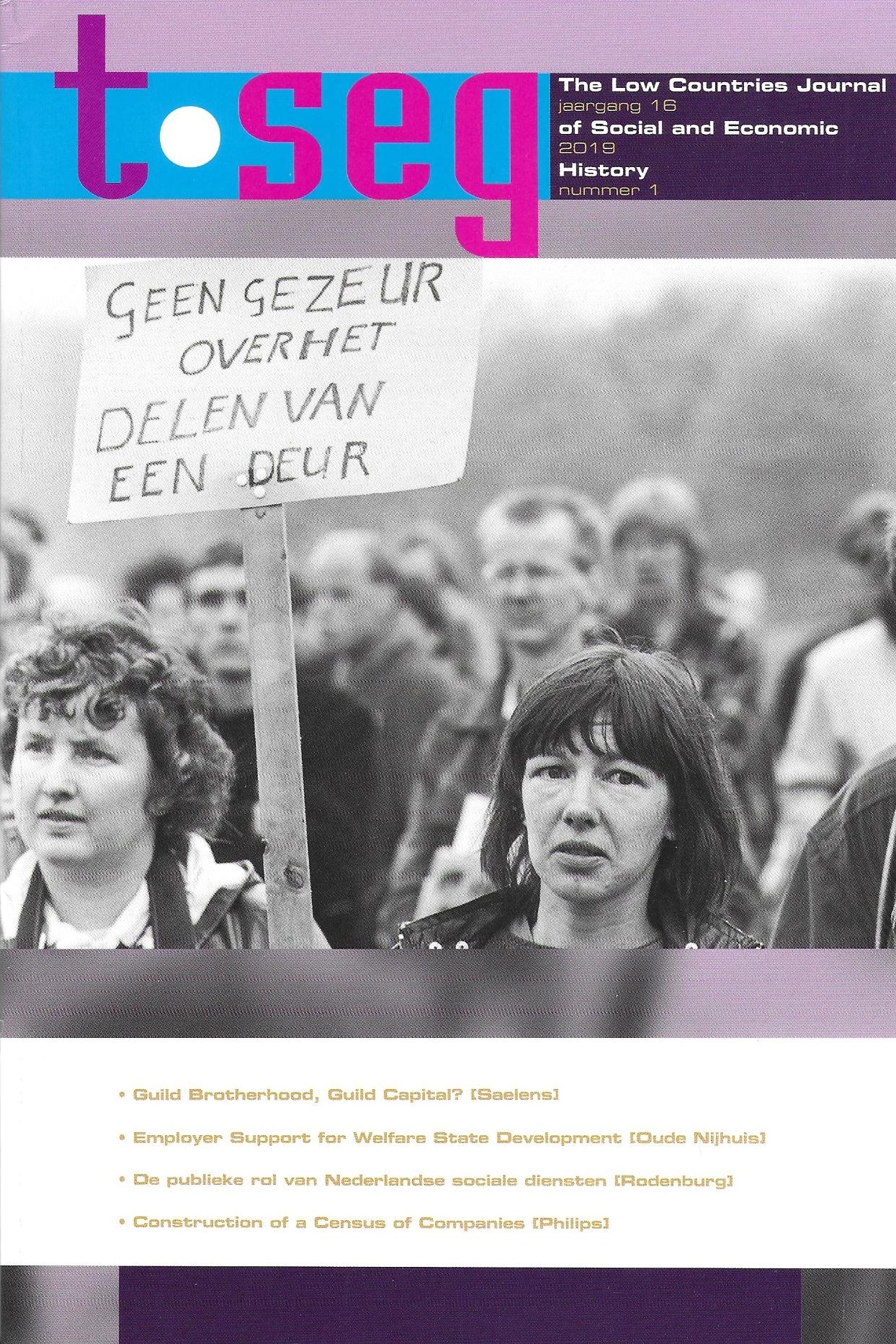Guild brotherhood, guild capital? Social network strategies of master weavers and drapers in fourteenth-century Ghent
DOI:
https://doi.org/10.18352/tseg.1036Keywords:
social networks, craft guilds, textile industry, late medieval urban society, FlandersAbstract
Over the last few decades most guild studies in medieval history have successfully shifted towards a growing attention for the ‘extra-economic’ aspects of guilds, pointing at the social, political and cultural experiences of craft guilds in establishing social networks, defending members’ interests and defining civic culture. Gervase Rosser, in particular, has thoroughly grasped these expressions of the collective consciousness of medieval craft guilds in international literature, identifying them as part of a ‘guild brotherhood’. Discussions on the construction of ‘identity’, ‘solidarity’, ‘trust’ or ‘civil society’ among artisans are, however, hardly ever grounded in the material conditions for industrial production and the concrete power relations of late medieval urban society. In this article I wish to add to this debate a stronger emphasis on the functionality of social ties among craftsmen within the organization of manufacture and the guild’s political economy by investigating the social networks among a population of master weavers in fourteenth-century Ghent. As it appears, the social resources of these weavers – their ‘guild capital’ – were not equally distributed in a brotherhood kind of way. Rather, it was especially in entrepreneurship that ‘guild capital’ could be made, as drapers amplified their actual inclusion within the social fabric of guild and city by establishing intergenerational social mobility, political factions, and class endogamy. This was particularly so within the large-scale and socially polarized textile sector of a European industrial centre like the Flemish city of Ghent.Downloads
Download data is not yet available.
Published
2019-06-12
Issue
Section
Research Article
License
Copyright (c) 2024 Wout Saelens

This work is licensed under a Creative Commons Attribution 4.0 International License.
How to Cite
Saelens, W. (2019). Guild brotherhood, guild capital? Social network strategies of master weavers and drapers in fourteenth-century Ghent. TSEG - The Low Countries Journal of Social and Economic History, 16(1). https://doi.org/10.18352/tseg.1036






